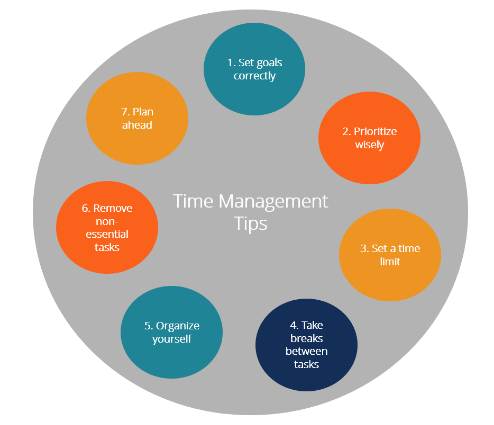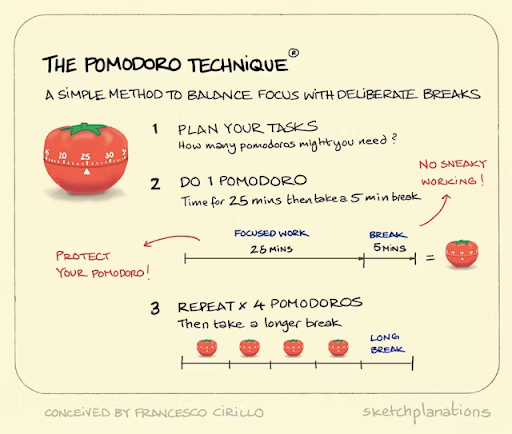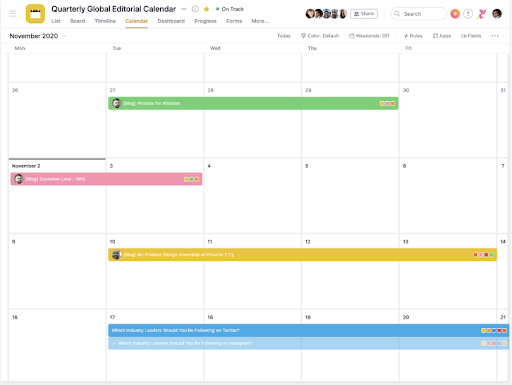Whether working from home or at an office, learning how to manage your time is essential. Effective time management habits are vital to getting more tasks done, managing work-life balance, and leading a productive workday.
On top of that, productive people are generally happier at work and in their personal lives. Nonetheless, mastering time management skills isn't as simple as it sounds. There are plenty of time management techniques to learn and master.
In this guide, we'll explain how to seamlessly blend multiple time management techniques together and improve your efficiency.
What is Time Management?
Time management is the process of allocating your resources and time toward work tasks in a productive manner. Because let's face it. We all wish there were more time in the day.

Time-management skills are relevant to every career. It's in the best interest of employees, entrepreneurs, and business leaders to stay efficient and get their tasks done on time. Entrepreneurs running small businesses and business leaders can enhance their time management by hiring a virtual assistant.
In doing so, they can stay productive, profitable, and satisfied with the work they're doing every day.
Benefits of Practicing Time Management
There are several benefits to practising proper time management techniques on a daily basis.
These benefits include:
- Time management reduces stress since people can better complete their tasks against tight deadlines.
- Better time management skills can increase energy, giving people more gusto throughout the day.
- Effective time management habits can result in efficient goal achievement, meaning you can accomplish personal and company goals quickly.
- Effective time management leads to better prioritization and greater productivity and focus.
- Practicing time management habits can result in a healthy work-life balance.
Common Challenges with Time Management
Practicing time management has advantages, but it's not short of expected challenges either.
Managing your time efficiently is easier said than done. Here are all the challenges associated with time management:
- Multitasking is also a time management issue — it's not possible to complete simultaneous urgent tasks efficiently.
- Knowing how much time a task requires can be difficult, making it challenging to build a work schedule.
- Not making a to-do list is one of the most common mistakes in time management.
By setting the right time management system in place, you can benefit from less stress and increased productivity at your job.
6 Types of Time Management Techniques
You can try a wide range of time management techniques to be more productive at work. Here are six of the most popular time management techniques that work.
1. Pomodoro Technique
The Pomodoro technique is a unique time management strategy invented by Francesco Cirillo. This method involves working in 25-minute intervals called pomodoros, followed by short breaks.

Cirillo used a kitchen timer shaped like a tomato to create this method, hence the name (Pomodoro is Italian for tomato).
If you're interested in trying this time management for yourself, go ahead and download the RoundPieApp timer.
2. Time Blocking Method
The time-blocking method involves breaking up daily tasks into four stages:
- Planning: The first step involves assigning the work you have to do in specific categories.
- Blocking: Next, you'll block each task into time slots for the hours you're working.
- Acting: Then, complete your urgent tasks in order or importance.
- Revision: If you need to revamp your strategy, you can always revise your approach.
Because of its ease of use and flexibility, the time-blocking technique is most popular among analytical thinkers, working students, and parents.
3. Getting Things Done (GTD) Method
David Allen created the GTD method, which involves breaking down each task to uncover their meaning and assigning an order of importance. In doing so, people can better organize and complete daily tasks with efficiency.
Here's how the GTD method works:
- The first step is capturing actions that are bouncing around in your mind — it's difficult to focus when a lot of things are on your mind.
- Next, clarify the meaning of your action items. Why do you need to do them? Why are they important?
- Then, you have to organize your action items and reflect on your priorities.
- Finally, you can engage in your actions and get things done.
The GTD method is ideal for entrepreneurs and business leaders juggling many important tasks that need attention.
4. Deep Work
Deep Work is a time management philosophy introduced by Cal Newport in his book "Deep Work: Rules for Focused Success in a Distracted World."

The book makes a difference between deep work and shallow work.
Deep work requires deep thinking in a concentrated environment, such as writing a book. On the other hand, shallow work is less intense and easier to complete with surrounding distractions.
If you work in a creative field, you should schedule time daily to complete deep work. Ideally, this should take place first. With your crucial work out of the way, you can focus on shallow work like answering emails.
5. Apply The 80/20 Rule
The 80/20 rule is an interesting concept. It involves focusing on the 20% of tasks that generate 80% of the results.
In other words, you should only focus on manageable tasks that bring exceptional results to your business. The most successful people delegate 80% of the other tasks they have to do.
This rule acknowledges that there may be too many tasks on your schedule to focus on individually. Instead, you should prioritize tasks that bring the most value to your organization.
6. Eat That Frog Technique
This time management technique is a time management strategy named after a quote by Mark Twain.
This strategy involves breaking up a project into small, defined tasks and SMART goals.
From setting clear goals and deadlines to organizing tasks in order of priority, your objective is to "eat the frog" one bite at a time. What is the frog, you might ask? The task you typically avoid or procrastinate on.
When you get the hardest task out of the way first, it's smooth sailing for the rest of the day.
How To Combine Time Management Techniques
There's no one-size-fits-all time management technique.
In fact, many people combine their favorite time management strategies to manage their work days. If you want to follow this approach, here are some tips to help you get started:
- Remember that every time management strategy isn't perfect. Each has its own strengths and weaknesses.
- Find the strengths and weaknesses of the methods you want to try and reinforce them with each other. For example, you can combine the Pomodoro and the time-blocking methods to prioritize taking breaks and make productive use of your time.
- Try each of these techniques out to see which ones work for you. Entrepreneurs, freelancers, executives, and business leaders have different work modes.
Ultimately, be patient and open to changing your time schedule multiple times before finding your sweet spot.
Bonus Tips
Are you ready to take your time management to the next level? If so, here are some bonus tips to try.
Schedule Your Day
Scheduling your day is the first and most important step in time management. Luckily, there are several different time-scheduling tools and apps you can use to get the job done.

The way you schedule your day will ultimately affect your productivity. Therefore, you should use calendars, to-do lists, task apps, and journals to schedule and prioritize your daily activities.
If you want to schedule your day successfully, find out how long it takes to complete each work task. You can either make a guess or use time-tracking software.
Plan Around Your Productivity
It's not possible to be productive throughout the entire day. Why? We face changing moods that can affect our energy levels and work patterns.
As a result, it's important to plan around your productivity to work when you're most engaged and take breaks when your energy levels are low.
Tracking your feelings and work patterns can help develop a schedule that pairs complex tasks with your most productive times and less important tasks with less productive times.
Practice Saying "No"
It can be challenging for many people to master how to say no. Saying "yes" too often can add too many tasks to your busy schedule.
Adding tasks can throw a wrench in your plans if you've already planned an efficient schedule. If you've reached your maximum bandwidth, it's alright to say no.
At the minimum, you should strive to push back deadlines and delegate tasks to set clear boundaries and prioritize your workload. While everyone wants to be a team player, you should stick to the time management system you have in place.
Final Words
Blending multiple time management techniques with time limits and time blocks, you're on the right path to optimizing your daily schedule. Why? Learning how to manage your time properly can help you be more efficient and happy at work while achieving a sense of accomplishment. If you're ready to put your own time management strategy into place and improve your daily life, you can start by following the helpful strategies in this guide. You can also try the RoundPieApp for free.
About the author:
Guillaume is a digital marketer focused on handling the outreach strategy at uSERP and content management at Wordable. Outside of work, he enjoys his expat life in sunny Mexico, reading books, wandering around and catching the latest shows on TV.
What would you like to know, and what would be the best way to share this information with you? What are the best tips & tricks, what workaround do you use? We'd really appreciate your insight on these ones to make our integrations better, more productive, and much more efficient. Comments, tweets are always welcome.